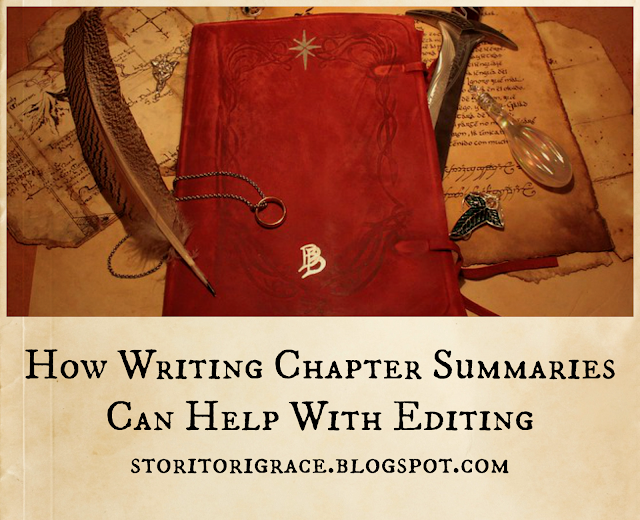I first heard about these when I was writing my first book proposal. I had no clue how to do that, so I looked at all of these different publisher requirements and just included them all in my proposal. Apparently, chapter summaries are used for just non-fiction books for proposals, but I've found that writing them can be so handy for fiction writers. We have to juggle so many elements of story it can be overwhelming and writing these has saved me a lot of headache. I tried this method with my last draft and I love it. I'm definitely using it from now on.
I've written mini versions of these as I write as I've mentioned in another post, but these I've written while editing. The way I outlined my last book was I read every chapter then wrote chapter summaries for each one then I went over them to help create an outline. I want to use these again for the next stage of editing to help me remember elements of my story. I wish I did this with my previous book. Thank God for ctrl+F.
1.) Have Small Plot Summaries - The main reason for chapter summaries is to remember the general plot for each chapter. My chapter summaries have been one or two paragraphs and I try to write a sentence for every scene. I also separate paragraphs by point of view.
2.) Keep Track of Point of Views - Chapter summaries are seriously helpful for keeping track of points of views, so you know how balanced they are. Does this character have enough page time? Do they not? I like to highlight the first word of the POV in a different color so they catch my eye.
3.) Have Small Character Arc Summaries - For some reason I have the toughest time with character arcs sometimes. Is my character changing enough? Are they stagnating? Where am I in their arc? I base my character arc off of this awesome diagram that Sara Letourneau made, so I like to write a sentence or two in my summaries about where they are in that arc.
4.) Keep Track of How Much Time Has Elapsed - I get time confused so often. I will be writing and be like, "Wait so how long have they been walking in the wilderness?" Keep timelines is really helpful to keep things consistent, especially with travel distances.
5.) Keep Track of Inventory - It’s really hard to keep up with characters finding things and then losing things or leaving them behind somewhere. So I like to write down important inventory items to keep track and if they do magically have something that was already burned in a volcano I know in the next draft that they shouldn’t have that thing.
6.) Keep Track of Wounds - Another thing I tend to lose track of is wounds. I forget to have my characters not feel so good or limp or grimace when they strain something. My characters get pretty beat up so this helps me remember all the injuries and when they’ve healed.
My Template:
Summary:
Time Elapsed:
Wounds:
Inventory:
Changes Needed:
Conclusion - Using these before or after you write your drafts can save a lot of headache. I also made notes of things I needed to change in each summary like inconsistency in character or things my characters did that didn’t make sense. There are so many ways to customize to make editing easier.
Have you tried writing chapter summaries? What things would you add to this summary list? If you don’t use chapter summaries what things do you do to keep track of all of these story elements?
You may also like:
3 Things to Note While Writing First Drafts to Make Editing Easier
Extending Your Novel: How to Make the Story Longer Without Just Adding Fluff
Why I Love Writing Second Drafts
Writing vs. Editing: The Different Mindsets
How I Do Betas: Tips on Efficiently Testing Your Book on Willing Test Subjects



No comments:
Post a Comment